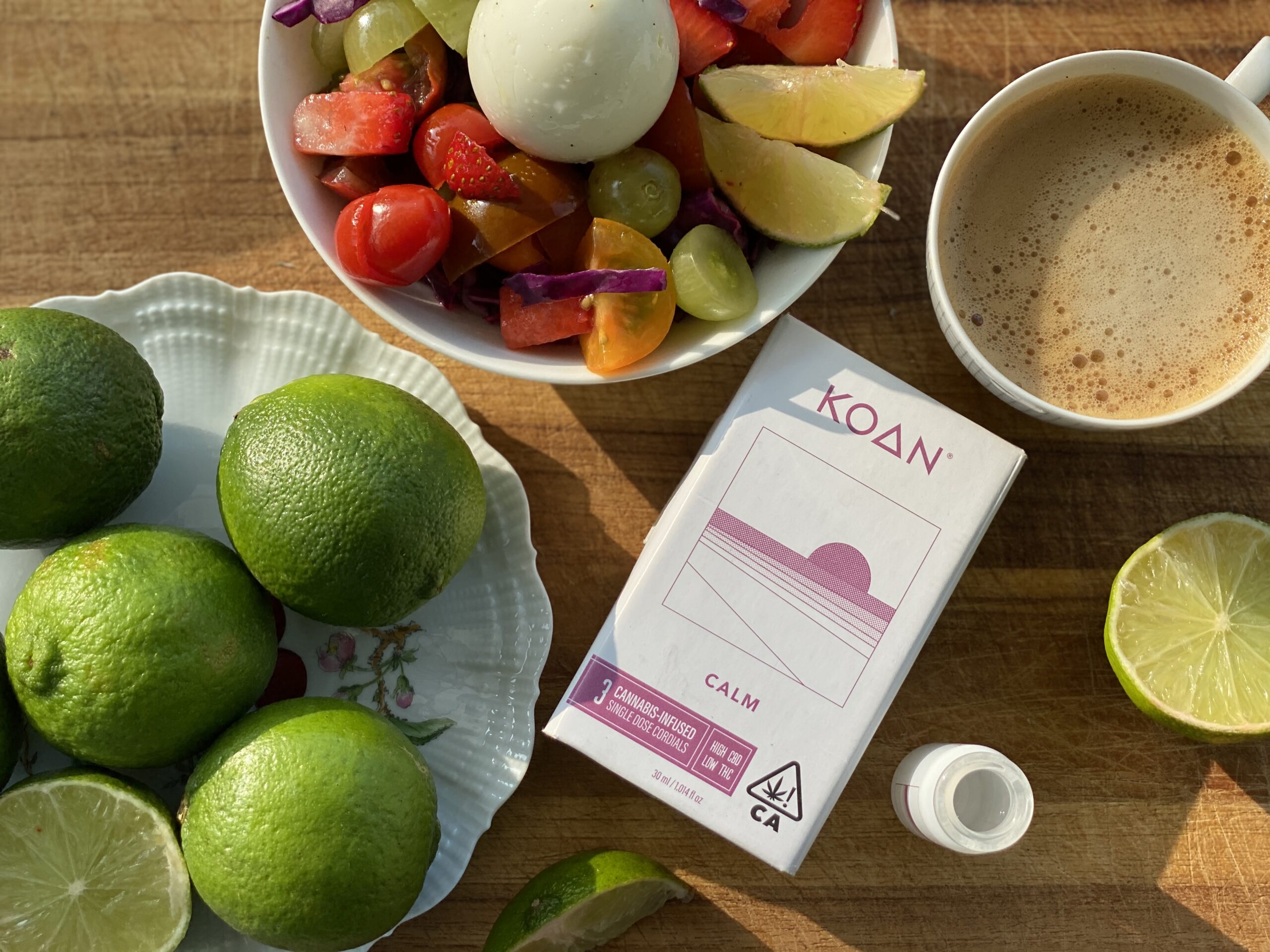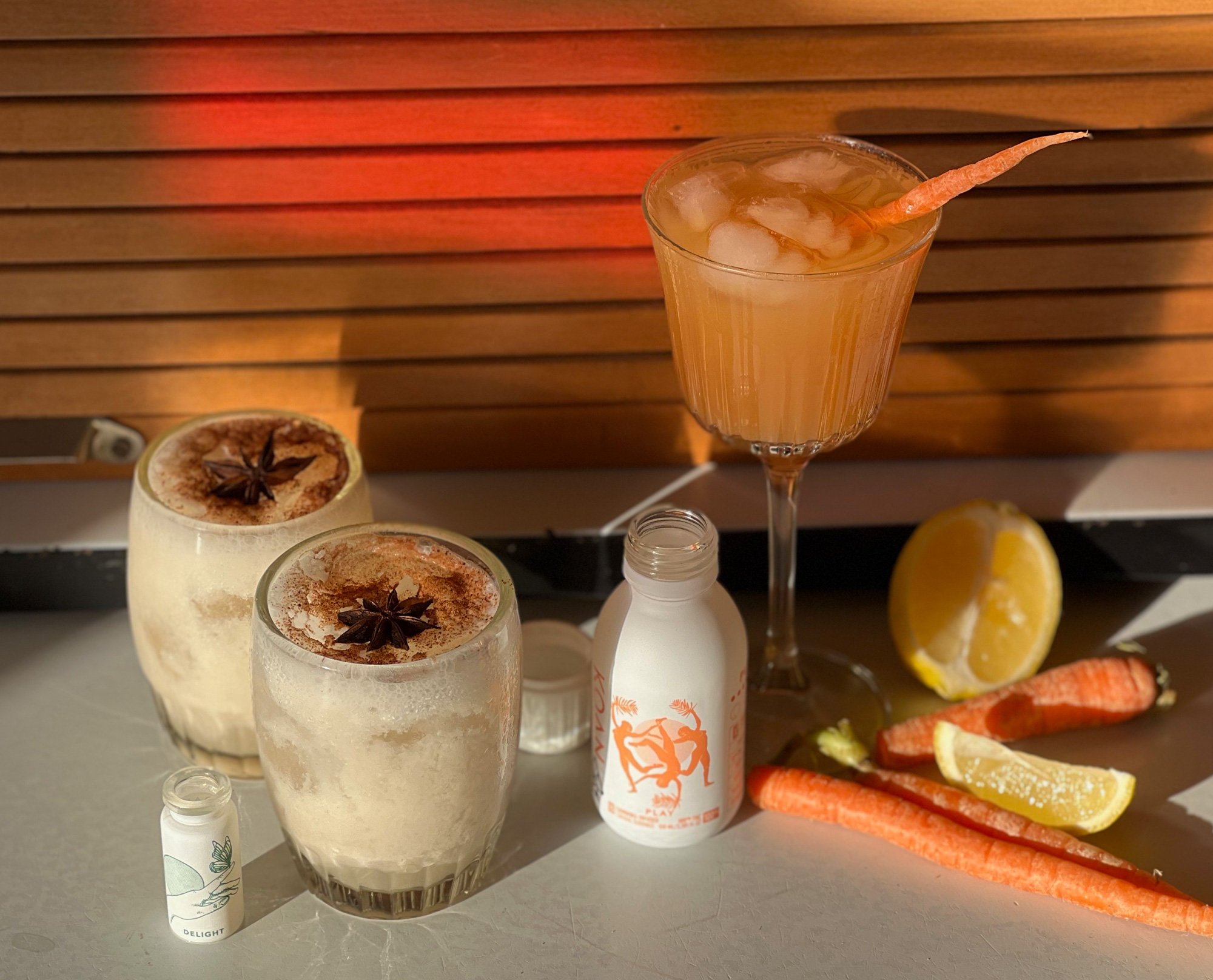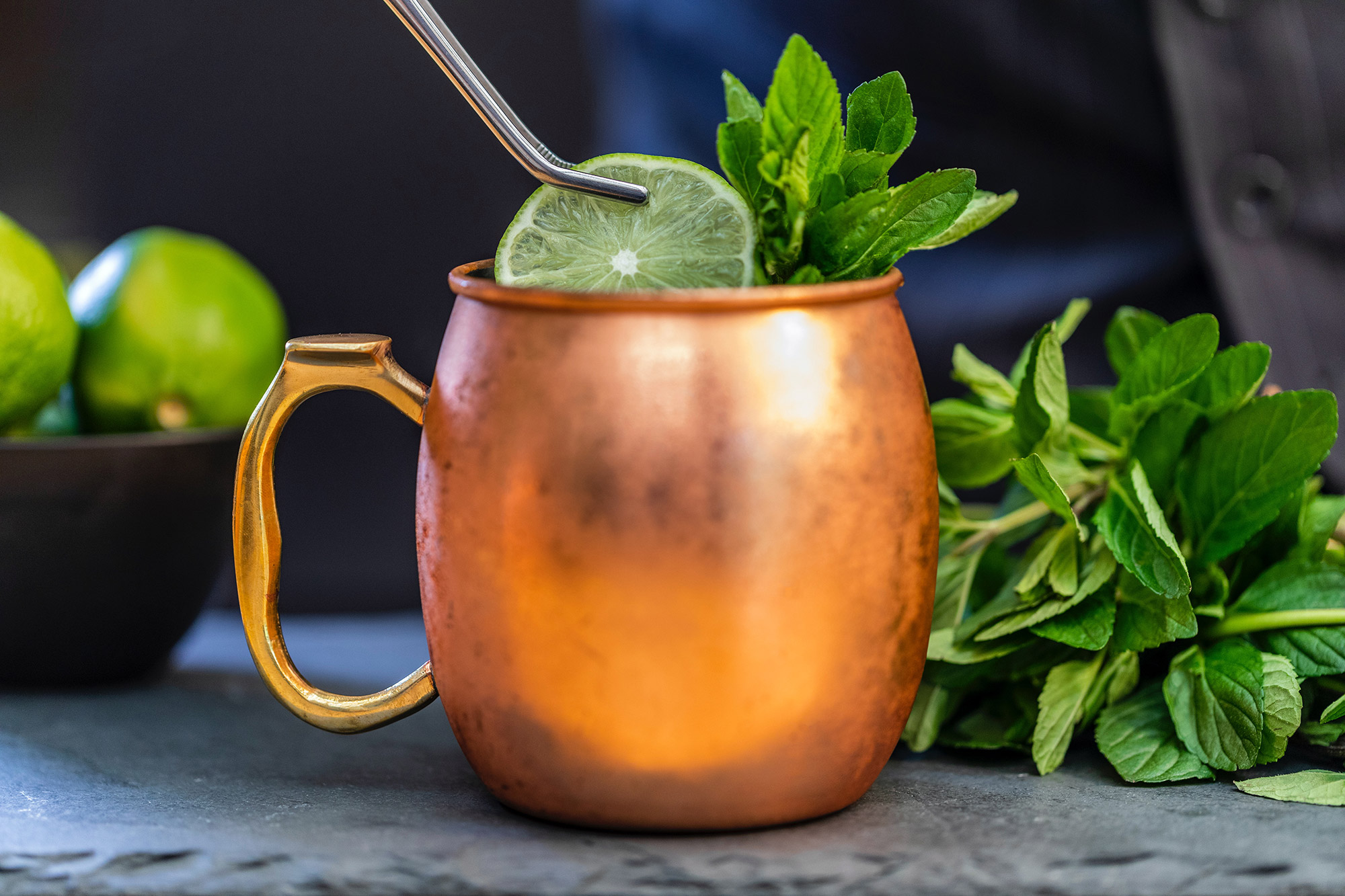Your Guide to Microdosing Cannabis

Table of contents
Microdosing cannabis is the practice of consuming small doses of cannabis, typically below the psychoactive threshold. Generally, the goal of cannabis microdosing is to maximize the health and wellness benefits of cannabis without overwhelming your body and mind with the psychotropic response to THC.
Ultimately you gain the benefits of cannabis without altering your state of mind to the point that your ability to participate in life diminishes. This new philosophy is gaining strength as cannabis moves beyond recreational use and becomes more mainstream in the health and wellness arena.
The term “microdosing” is not new. It is applied to many psychoactive substances, including LSD and psilocybin. With cannabis, the key go-to principle is to “start low and go slow”, as the correct dose is somewhat different for everyone. With so many ways to consume cannabis — smoking, drinking, or eating — it becomes even more paramount that you spend the time to find the dose that is correct for you.
How Much Is a Microdose?
Most authority groups — both private and governmental — set a microdose of cannabis at 10 mg of THC or less, depending on your tolerance. If you are buying prepackaged cannabis products, you can look at the label to determine if they are low-dose. Not every product lists the doses, so avoid products with labels that seem vague.
It is worth noting that THC is just one of the many cannabinoids in cannabis. There are somewhere between 113-144 unique chemical chains in cannabis. THC is the only one that accounts for psychoactive effects.
While the range of microdosing is generally considered between 1 mg and 10 mg of THC, it is essential to note that many aspects go into determining what a microdose is right for you, and that amount will differ from one person to the next. For someone new to cannabis, 10 mg might be too strong of a dose. Start slowly with 1 mg and move upwards as needed. Yet, for someone who consumes cannabis daily, 10 mg might be a comfortable starting point.
While a defined measurement as a standard is good, it does not measure the THC’s potency in cannabis. If you experience your perfect dose at 2 mg of THC in product A and try product B, which also has 2 mg of THC, your experience may be different if the potency between products A and B is not equal. The rule of thumb is to always start low, when you are trying a new product. If 2 mg of THC has been your benchmark, you may want to begin at 1 mg with a new product rather than heading straight to the 2 mg THC product.
Factors that affect the potency of THC include:
- Delivery method — smoking, eating, topical, etc.
- Your physical and mental health status — anxiety, headaches, flu, a poor night of sleep are only some of the factors that may affect your experience.
- Time of dosing — day, night, morning, evening, etc.
- Digestive process — edibles or tinctures will have slower onset (and take longer to exit your system) if you have eaten before consuming cannabis. The more food you have in your stomach, the slower the onset, and the longer the duration of experience.
- Differences between absorption in the stomach and the liver.
All these factors and many more affect how quickly the substance gets into your bloodstream and how it interacts with the other systems in your body (in short, bioavailability). With study, it becomes paramount that individuals discover the bioavailability attributes of their go-to cannabis product and delivery method, as well as how it is affected by their own state of health and mind. Doing so helps you find a consistent way to achieve your med-level dose of cannabis each time you need it.
The Beauty of Blended Cannabis Products for Microdosing
Blended products (products that combine CBD and THC) may offer less risk of becoming overly psychoactive and thus, may be better to use when microdosing. You gain the benefits of a microdose of THC combined with the soothing effects of CBD. With carefully crafted cannabis blends, you are not typically relying on just THC to help relieve your symptoms or achieve your desired state of mind; the best effects are achieved via a complex mix of cannabinoids, terpenes ( see A-Bisabolol, D-Limonene and Beta Ocimene ) and adaptogens that amplify the effects of one another via the entourage effect.
Koan’s CALM cordial is an excellent example of how the entourage effect works. The active ingredients are 1 mg of THC and 15 mg of CBD as well as selective terpenes. The ratio offers a designed anxiolytic experience. The microdose of THC combined with terpenes helps enhance the anti-anxiety effects experienced when you use CBD. As the name implies, CALM is a product designed to relax the mind and body in situations where anxiety, nerves, or paranoia may overwhelm the person.
Effect Times
How you take a microdose is a critical consideration when it comes to effect time. Edibles can take up to two full hours or longer to produce their full effect. Be sure to wait for the time specified by the product before taking more. One way people may accidentally take a psychoactive dose of THC is by taking more edibles before the first ingestion has fully digested. What are the rules? Go slow and be patient. Whether you are talking about cannabis, alcohol, or medications, all these substances have a peak and wave existence. Many factors influence both these variables, so it may be more beneficial to avoid certain delivery methods that don’t offer a high level of control and predictability when it comes to onset time and duration of effect.
Controlling Cannabis Tolerance
Cannabis tolerance occurs when the receptors in your brain that attract THC chemicals begin to weaken. The result is the psychoactive effect of using THC becomes less prominent. The good news is those receptors come back, and there are a few ways to control tolerance. Here’s how:
- Reduce the amount of THC that you regularly consume. The recovery process may be as short as two days or as long as 2-3 weeks. This is not an addiction treatment; it is just a body reset.
- Keep the dose of cannabis at a consistent level and use it only when needed as you would with most medications.
- Move to a precisely formulated, single-dose product so that you rigidly control how much THC you ingest per occasion.
- Choose high-CBD, low-THC formulations. Some cannabis blends contain as little as 1mg THC per single dose, a mere whisper compared to a typical psychoactive dose.
With a proactive approach, most people can control their tolerance levels. The goal is to use just enough THC to help but not so much that it becomes needed. Approaching usage through bioaccumulation is a better goal. When you bioaccumulate cannabis, your body stores what it needs for later, so you use lower doses less often to maintain the desired effects.
Benefits of Microdosing Cannabis
As you have undoubtedly already realized, cannabis microdosing offers many benefits, including but not limited to:
- Enjoying greater benefits of both THC and CBD (as well as botanical extracts) in blended cannabis products due to the entourage effect;
- Experiencing a range of positive effects while remaining fully present and functional in cases of consuming sub-psychoactive doses;
- Creating and maintaining a balance throughout the body known as homeostasis.
But can microdosing help improve the quality of life of people who face specific issues and limitations? Using cannabis is a personal experience, but many peer-review studies are finding that microdosing cannabis shows potential as a treatment or part of a treatment for many issues and disorders. Let’s take a look at some of those studies below…
How does microdosing THC help with anxiety?
It costs about 33 billion dollars to treat anxiety disorders in the emergency room each year. Research indicates the microdosing of cannabis might help reduce depression and anxiety. In Utah, they are considering the use of microdosing cannabis to decrease the discomfort an opioid addict experiences when transitioning from opioids to Buprenorphine.
A study in 2017 compared the effects of THC at different doses. A microdose of 7.5 mg showed a reduction of anxious feelings during stressful test conditions. The same study showed that a 12.5 mg of THC under the same circumstances enhanced feelings of stress and anxiety. Keeping the psychoactive properties at a microdose level below 10 mg can help people better handle situations where anxiety has been an issue.
How does microdosing THC help with focus?
There is not much research on the peer-review level, but some studies show that cannabis helps increase blood flow to the brain, and that may be all that is needed to help you focus on your tasks. More than likely, we are talking about a decrease in things that would typically really bug you. For example, a decrease in anxiety means energy is moved from being anxious and side-tracked to being present for more productive tasks. That’s another way to look at focus – you’re getting things done. Microdosing helps you manage the impact of THC.
The same approach is possible with goals, such as getting more active or exercising. Without the more significant issues looming, you have more focus to get things done, including making positive lifestyle changes, getting more exercise, changing your diet, and even sleeping better at night.
How does microdosing cannabis help with sleep issues?
Studies have shown that microdosing cannabis helps improve one’s quality of sleep. A well-rested body is ready to go in the morning.
Studies on severely mentally ill prisoners showed remarkable results, including for individuals with PTSD. Microdosing allowed these patients to achieve a higher quality of sleep with fewer episodes of nightmares. Individuals with these conditions are often prescribed psychotic medications that may help control their symptoms by suppressing their functionality. Microdosing cannabis helped reduce their symptoms so their body could function better in terms of sleep, which helped decrease overall fatigue.
Microdosing for severe mental conditions
Synthetic cannabinoids have helped specific prison populations that suffer from severe mental illness, including PTSD, self-harm, chronic pain, and other medical conditions. The study showed a dramatic reduction in loss of sleep and fewer nights where nightmares were present.
Synthetic cannabinoids for pain management
In another study, Nabiximols (a cannabinoid extract) is showing significant outcomes in helping cancer patients reduce pain when opioid drugs were not effective. [4] These studies show a correlation between the use of cannabinoids and improvement in psychological ailments, including anxiety, depression, PTSD, and mental illness. They have shown the ability of cannabinoids to help reduce pain in people who have advanced cancer when other types of pain control medication are not effective.
The Big Picture of Microdosing is Still Developing
The full spectrum of cannabis microdosing is still unfurling, but the benefits and potential are becoming apparent. Microdosing of cannabis is changing how people live – for the better. By helping deal with the effects of anxiety, stress, sleeplessness, pain, and fatigue – among other ailments – people who microdose are returning to a more balanced life.


